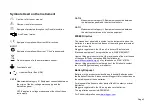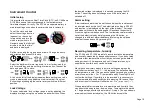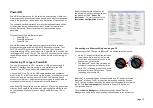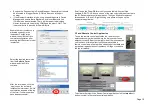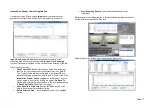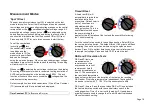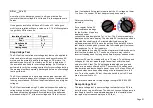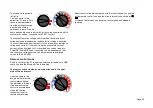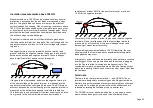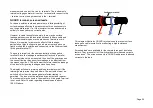
Page 11
displayed value and advances to entering humidity if temperature
is currently being entered.
Temperature and humidity setting and is entered as follows:
Temperature and relative humidity are entered together:
1. At the
t
°
---
prompt change the setting even if it shows the
setting you require
2. Set
t
°
to setting you require, it will flash, then press left
arrow key again, do
not
press OK.
3. Enter
rH
setting
On
and press OK to confirm both
temperature and relative humidity readings will be
recorded.
It is not possible to enter only a relative humidity reading as it is
meaningless without temperature.
Breakdown / burn mode – in IR & IR(t) test modes
The insulation resistance ‘IR’ test operates
in either ‘Breakdown’ or ‘Burn’ mode.
Default mode is
breakdown
.
Left and right arrow buttons toggle between
burn and breakdown mode when a voltage
range is selected. In the breakdown mode the
breakdown icon will be indicated.
In breakdown mode the test will automatically terminate on
detection of a breakdown to prevent damage to the insulation.
Burn mode disables the normal breakdown detection and test
voltage continues after breakdown of the insulation. This
enables the location of a failure to be detected but it is a
destructive test.
Due to the potential damage that could occur, the unit produces two
long beeps when starting a test with burn mode activated.
Running an insulation test
Before testing any reactive load ensure that the insulation is
fully discharged.
15 kV - The functional earth
(
g
)
terminal must be connected to
ground or a uni-potential bonding point.
Great care should always be taken when connecting the leads to a
system to be tested. Even isolated systems may exhibit charges or
induced voltages and appropriate Safe Working Practices must be
employed.
On connection of the test leads prior to starting a test, any voltages
of 50 V or more will be indicated on the display, accompanied by an
intermittent beeper, (see Voltmeter pg. 9). This is especially likely in
electrically noisy environments.
Should electrical noise be present it will cause a current to flow
through the instrument’s internal discharge resistors. If this becomes
excessive and exceeds instrument rating, damage to the instrument
may result.
The S1-568, S1-1068 and S1-1568 have been designed to handle
high noise currents up to 8 mA. If currents above 8 mA are detected,



